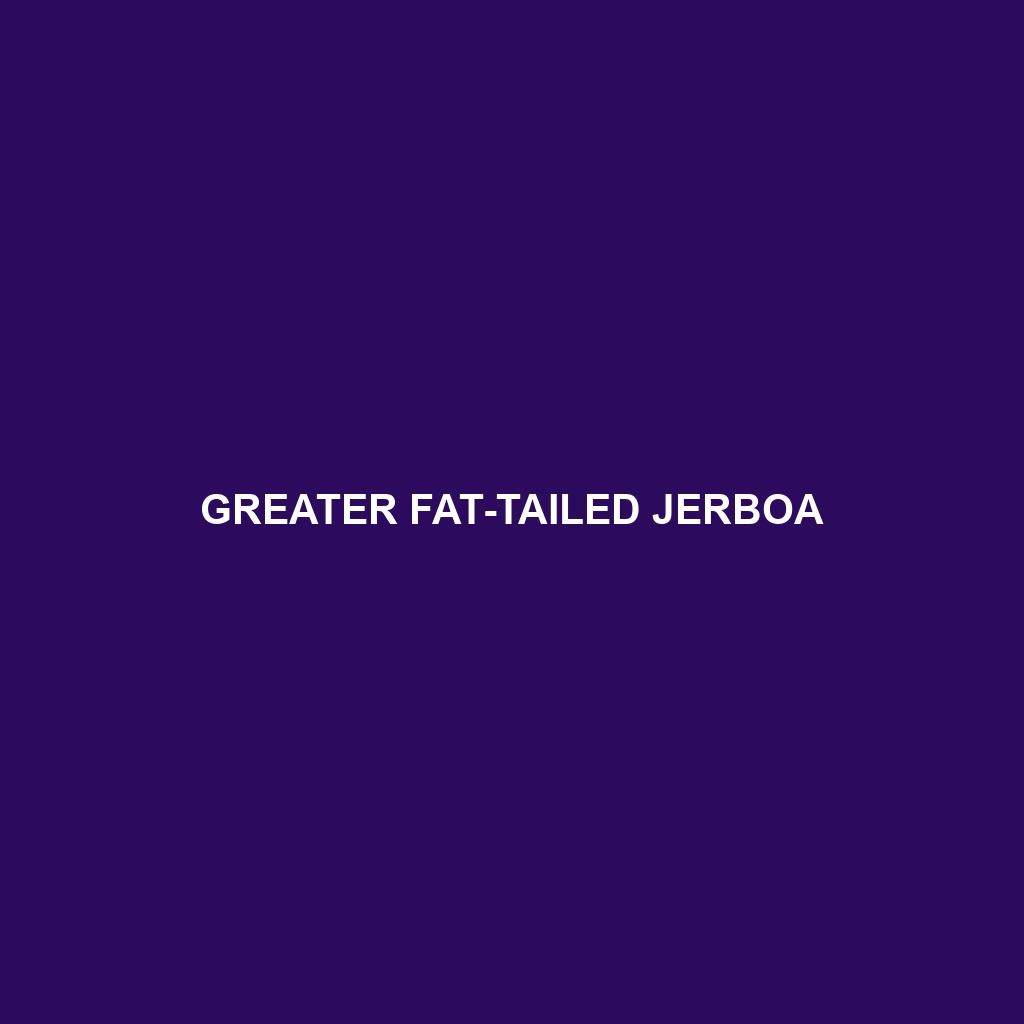Greater Fat-tailed Jerboa (Scientific Name: )
Habitat: The Greater Fat-tailed Jerboa is primarily found in the arid regions of Central Asia, particularly in countries such as Mongolia, Kazakhstan, and parts of northern China. These small mammals thrive in desert and steppe environments, where they inhabit sandy soils, dunes, and sparse vegetation. Their ability to adapt to harsh climates makes them resilient creatures in these challenging habitats.
Physical Characteristics: Greater Fat-tailed Jerboas are medium-sized rodents, measuring around 25–30 cm (10–12 inches) in length, including their long tails that can be twice the length of their bodies. They have a distinctive stout body covered in soft, coarse fur that ranges from light brown to sandy-colored, providing camouflage in their natural desert habitats. One of their most notable features is their large, flat tail, which serves as a fat storage organ, allowing them to survive in arid conditions. Additionally, their large hind feet are adapted for jumping and navigating sandy terrain.
Behavior: Generally nocturnal, Greater Fat-tailed Jerboas exhibit fascinating behaviors to conserve energy and avoid predators. They are skilled jumpers and can leap several meters to escape threats. During the day, they burrow into the sands to shield themselves from the extreme heat. These jerboas are also known for their social behavior, often living in small colonies, which enhances their protection against predators. Their keen sense of hearing aids in detecting threats and finding mates.
Diet: The diet of the Greater Fat-tailed Jerboa primarily consists of seeds, leaves, and roots. These herbivorous rodents have adapted to a diet that allows them to extract moisture from plant materials, minimizing their need for drinking water. Their foraging habits also include scavenging for insects when available, adding variety to their diet. This feeding behavior not only sustains them but also plays a role in seed dispersal within their habitat.
Reproduction: Greater Fat-tailed Jerboas breed seasonally, primarily in the spring and early summer months. After a gestation period of approximately 25 days, females give birth to a litter of 2 to 4 young. The offspring are born blind and helpless but develop rapidly. Parental care is vital, with mothers actively nursing and protecting their young until they are capable of independent foraging around 4 to 5 weeks after birth.
Conservation Status: The Greater Fat-tailed Jerboa is currently classified as ‘Least Concern’ by the International Union for Conservation of Nature (IUCN); however, habitat encroachment and climate changes pose potential threats. Conservation efforts are essential to monitor their populations in their native habitats to mitigate risks associated with environmental changes.
Interesting Facts: One fascinating aspect of the Greater Fat-tailed Jerboa is its ability to store fat in its tail, which allows it to survive prolonged periods without food or water—a remarkable adaptation to desert life. Furthermore, these jerboas can jump up to three feet in a single bound, making them one of the most agile rodents in their environment.
Role in Ecosystem: Greater Fat-tailed Jerboas play a crucial role in their ecosystem as both herbivores and prey. By feeding on seeds and plants, they contribute to the vegetation dynamics and help in maintaining the balance within their habitats. Additionally, as prey for various predators, they are an integral part of the food web, supporting the survival of species that depend on them for sustenance.
